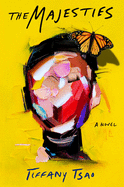
| Publisher: | Atria | |
| Genre: | Psychological, Family Life, Literary, Thrillers, Fiction, Siblings | |
| ISBN: | 9781982115500 | |
| Pub Date: | January 2020 | |
| Price: | $26 |
| Starred | Fiction |
by Tiffany Tsao
Since comparisons to Kevin Kwan's Crazy Rich Asians seem unavoidable, here's what might be familiar: yes, crazy, rich, Asian characters populate Tiffany Tsao's The Majesties. Differences, however, immediately overshadow superficial similarities, most obviously from the very first sentence: "When your sister murders three hundred people, you can't help but wonder why--especially if you were one of the intended victims." As the sole survivor of her sister's deadly machinations, Gwendolyn--called "Doll"--lies in a coma. She claims the position of omniscient narrator, revealing how she became trapped in her hospital bed. The determination to understand why Estella did what she did keeps Doll alive.
Doll and Estella are Sulinados, who are among Indonesia's wealthiest families. The patriarch--prone to outbursts--is turning 80, and the extended clan gathers to celebrate, only to die by poison-laced shark fin soup. Estella flawlessly executes this mass murder by including herself among her victims. Her final words are only for Doll: "Forgive me." The trespasses in The Majesties are many, although Estella is hardly the lone perpetrator: three generations of Sulinados have used their unfettered power to create alliances, multiply holdings, exert and sustain control.
The Majesties is an urgent literary thriller that also affectingly, seamlessly acts as a social treatise exposing the moral and legal abuses of the ultra-elite. Raised in Singapore and Indonesia, Tsao evokes a convincing sense of place. Vivid geographic and cultural details notwithstanding, Tsao's (The Oddfits) first non-fantasy novel proves to be an engrossing, eloquent story of fatal familial dysfunction. --Terry Hong, Smithsonian BookDragon
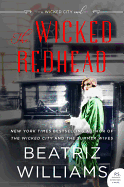
| Publisher: | Morrow | |
| Genre: | Women, Family Life, Historical - 20th Century, General, Romance, Fiction, Historical | |
| ISBN: | 9780062660329 | |
| Pub Date: | December 2019 | |
| Price: | $16.99 |
| Fiction |
by Beatriz Williams
In Beatriz Williams's 2017 novel The Wicked City, redheaded flapper Geneva "Gin" Kelly surprised herself and everyone else by falling madly in love with a Prohibition agent. Things got (even) more complicated when her new beau, Oliver, enlisted Gin to help lay a trap for Duke Kelly, her notorious bootlegger stepfather. In The Wicked Redhead, Williams picks up both Gin's story and that of Ella Gilbert, a woman living in 1990s Greenwich Village, who suspects her building holds Prohibition-era ghosts. This second installment has as many twists as the cocktails Gin adores.
Newly separated and unemployed, Ella has only Gin's name and a racy photo to fuel her research into her building's history. Though Ella, like Gin, is connected to Williams's illustrious Schuyler clan, her narrative mainly serves to frame Gin's adventures up and down the East Coast. As Oliver doggedly pursues a liquor racket from the Gulf of Mexico to the northern Atlantic, Gin is beholden to and frustrated by his wealthy family. Like her namesake liquor, Gin and her story both sparkle elegantly on the surface and pack a surprising punch. More than just a smart-mouthed beauty, Gin is a grieving daughter, a hillbilly girl trying to build a life in New York, a brand-new guardian to her orphaned younger sister and a strong-willed woman in love. Her fast-paced, fast-talking adventures will leave readers astounded at her courage and thirsty for the next deliciously wicked romp in this series. --Katie Noah Gibson, blogger at Cakes, Tea and Dream
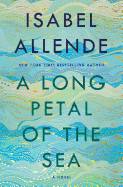
| Publisher: | Ballantine Books | |
| Genre: | Sagas, Historical - General, General, Romance, Literary, Fiction, Historical | |
| ISBN: | 9781984820150 | |
| Pub Date: | January 2020 | |
| Price: | $28 |
| Fiction |
by Isabel Allende
In the wake of the Spanish Civil War, thousands of Spaniards fled the victorious dictator's harsh regime. Thanks to the intervention of the poet Pablo Neruda, more than 2,000 Spanish refugees emigrated to Chile aboard a French steamer, the Winnipeg, in 1939. Isabel Allende (The House of the Spirits) traces the lives of a refugee couple, Roser and Victor Dalmau, and their connection to a powerful Chilean family in her sweeping novel A Long Petal of the Sea.
Roser is a young piano prodigy who comes to Barcelona to study music with Victor's father. She ends up falling in love with Victor's brother, Guillem, and is carrying Guillem's child by the time both brothers are caught up in the war. A series of particularly brutal battles (one of which causes Guillem's death) forces Victor and Roser to flee the country aboard the Winnipeg. In Chile, they are taken in by the idealistic son of a wealthy family, and rather grudgingly agree to live as man and wife, caring for the child, Marcel. Allende follows the intertwined fortunes of both families over the next six decades, as Victor and Roser struggle to build a life out of components they would not have chosen. They gradually come to respect, admire and then love one another, but both of them wrestle with the realities of lives shaped powerfully by war and death.
Even as Roser and Victor establish themselves in Chile, they long for Spain. Allende brings them through joys and challenges with grit, grace and stubborn hope. A Long Petal of the Sea is sprawling, sometimes difficult but ultimately satisfying. --Katie Noah Gibson, blogger at Cakes, Tea and Dreams
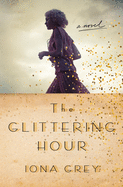
| Publisher: | Thomas Dunne Books | |
| Genre: | Women, Historical - 20th Century, Historical - General, General, Romance, Fiction, Historical | |
| ISBN: | 9781250066794 | |
| Pub Date: | December 2019 | |
| Price: | $28.99 |
| Fiction |
by Iona Grey
Interwoven throughout Alice's plodding days are flashbacks to Selina's youth in London, where she was a "Bright Young Thing," gossip columnists' favorite source for scandal. Her predilection for champagne-soaked evenings racing through London with her wealthy friends lands her at the door of Lawrence Weston, a poor painter who falls for her almost instantaneously. The two engage in a brief but breathtaking romance, an especially interesting and enjoyable section of the novel, before reality arrives to rip them apart. The reasons for their separation prove oversimplified, yet the heart of their story remains intact as Alice discovers her own identity and, in the process, learns her mother's fate. Grey (Letters to the Lost) proves that, above all, she understands how to write a love story that survives after it shatters, one that manages to outlive its own ticking clock. --Lauren Puckett, freelance writer
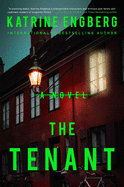
| Publisher: | Scout Press/Gallery | |
| Genre: | Mystery & Detective, Crime, International Crime & Mystery, Literary, Fiction | |
| ISBN: | 9781982127572 | |
| Pub Date: | January 2020 | |
| Price: | $27 |
| Mystery & Thriller |
by Katrine Engberg
Copenhagen Police detectives Jeppe Kørner and Anette Werner are the far-from-standard-issue pair who drive Katrine Engberg's crime series. The Tenant, originally published in 2016, is the first of four Kørner and Werner novels and the first to be published in the United States. Here's hoping the rest of the series makes it across the Atlantic.
"No one dies in my building," insists landlady Esther de Laurenti, but someone has: her 21-year-old tenant Julie Stender. Before Julie's assailant finished her off with a blow to the temple, he stabbed her repeatedly and carved a pattern into her face.
Not only has someone died in Esther's building, but the killer seems to have modeled his crime on a story that Esther has been writing. Recently retired from her professorship at the University of Copenhagen, Esther is working on a crime novel in which her young tenant features prominently. The violence in Esther's fiction is the apparent blueprint for Julie's murder, right down to the knife work on her face. Esther has been using Google Docs to share her work with the two other people in her online writing group; might one of them be the killer, or could someone else have read Esther's work in progress?
Engberg's plotting is dexterous, and her character-centered storytelling aligns nicely with her unhurried descriptions of Copenhagen. On one particular matter, readers will be a step ahead of the detectives, but otherwise The Tenant is yet another feather in the plumed cap of Scandinavian noir. --Nell Beram, author and freelance writer
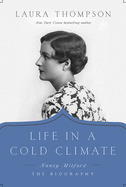
| Publisher: | Pegasus Books | |
| Genre: | Biography & Autobiography, Women, Literary Figures | |
| ISBN: | 9781643133034 | |
| Pub Date: | December 2019 | |
| Price: | $29.95 |
| Starred | Biography & Memoir |
by Laura Thompson
Beautiful, aristocratic and controversial, the Mitford sisters are still famous, largely because the oldest, Nancy, enriched her eight novels with details from her family's eccentric lives. In Life in a Cold Climate, Laura Thompson (The Six: Lives of the Mitford Sisters) investigates this enigmatic woman through her books and letters, and through interviews with two of her sisters, casting a brilliant light upon a writer whose glamour kept her books from receiving the respect they deserved.
Nancy Mitford (1904-1973) wrote her first novel, Highland Fling, to augment her income. When it became popular, she swiftly wrote three others and found that writing wasn't just a money-making endeavor--it was the core of her life.
Mitford outraged her family by satirizing them in her early books. In her masterpiece, The Pursuit of Love, she cannibalized their lives with cruel charm, creating what Thompson calls "the Mitford myth." Turning her family into vivid caricatures, she guaranteed they would be forever haunted by their fictional counterparts. This novel and those that followed were bestsellers, yet eroded her relationships with her mother and sisters.
Writing always came first for Nancy Mitford. Even the men she loved didn't get in the way of her work; after one disastrous marriage, she never embarked on another. Later, in France, she wrote four scholarly, readable historical biographies that were overshadowed by her fiction. Soon after completing Frederick the Great, her "light and sparkling" voice was silenced by cancer.
"The trouble with Nancy's life is she doesn't come first with anybody," her sister Diana once said. In this stunning biography of Nancy Mitford, she comes first, under an unshared spotlight, at last. --Janet Brown, author and former bookseller
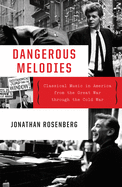
| Publisher: | Norton | |
| Genre: | History & Criticism, Philosophy & Social Aspects, Music, Genres & Styles, General, Classical | |
| ISBN: | 9780393608427 | |
| Pub Date: | December 2019 | |
| Price: | $39.95 |
| History |
by Jonathan Rosenberg
According to historian Jonathan Rosenberg, classical music has little relevance in the contemporary United States. But that wasn't always true. For much of the 20th century, classical music occupied a prominent role in American cultural and political life. In Dangerous Melodies: Classical Music in America from the Great War through the Cold War, Rosenberg explores the surprising ways in which classical music in the U.S. became repeatedly tangled in international politics.
It is a complicated and often ugly story. Music lovers divided into two camps. Musical nationalists found it difficult to separate the country's troubled relationships with Germany, Italy and, later, Russia from those countries' musical heritage. Musical universalists believed that music not only rose above nationalism but could be used to heal schisms between nations. For more than 50 years, the two groups clashed repeatedly over who should be allowed to perform in American concert halls and opera houses and what music they should be allowed to play, forcing the directors of musical institutions to make hard decisions. The music of Beethoven, Brahms, Strauss and Verdi, among others, became the focus of heated debate, and occasional violence. With the advent of the Cold War, the role of music and politics became even more complex as the U.S. government deployed American musicians as ambassadors for "the image of freedom in oppressed countries abroad."
In fact, Rosenberg argues, neither the fears of the musical nationalists nor the hopes of the musical universalists proved true. Still, classical music gave Americans a forum for discussing the nature of loyalty, patriotism, democracy, freedom and oppression. --Pamela Toler, blogging at History in the Margins
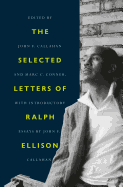
| Publisher: | Random House | |
| Genre: | Biography & Autobiography, American, Literary Figures, Letters, Literary Criticism, Literary Collections, African American | |
| ISBN: | 9780812998528 | |
| Pub Date: | December 2019 | |
| Price: | $50 |
| Essays & Criticism |
by John F. Callahan , Marc C. Conner, editors
Ralph Ellison (1913-1994) completed only one novel in his lifetime, but he was an accomplished essayist and letter writer. In a letter to Richard Wright, he wrote, "Letters come with difficulty." But "there was a time when I was more myself when writing a letter than at any other time." His voluminous correspondence is part memoir and part astute observations on literary and social issues. John F. Callahan, Ellison's literary executor, provides outstanding biographical overviews before each chapter.
Ellison's 1952 novel, Invisible Man, won the National Book Award for Fiction (besting Ernest Hemingway's The Old Man and the Sea and John Steinbeck's East of Eden). But it proved a hard act to follow. Over the next 42 years, Ellison worked on his second novel. "I've got a natural writer's block as big as the Ritz and as stubborn as a grease spot on a gabardine suit," he wrote to Saul Bellow in 1958. At the time of his death, the manuscript ran more than 2,000 pages. (Juneteenth was published posthumously in 1999, edited down to 368 pages. An expanded version, running 1,100 pages and retitled Three Days Before the Shooting..., was published in 2010.)
Ellison's most frequent correspondents include Langston Hughes, Saul Bellow, Richard Wright, close friend Albert Murray and his wife, Fanny. Particularly fascinating are the letters he wrote to his wife in the late 1950s during his affair with a married woman. Ellison's letters are as stirring, vital and well-crafted as his published essays and fiction. This is a monumental and irresistible collection. --Kevin Howell, independent reviewer and marketing consultant
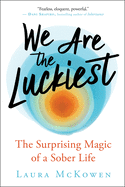
| Publisher: | New World Library | |
| Genre: | Self-Help, Biography & Autobiography, Women, Personal Memoirs, Alcohol, General, Self-Management, Substance Abuse & Addictions | |
| ISBN: | 9781608686544 | |
| Pub Date: | January 2020 | |
| Price: | $25.95 |
| Psychology & Self-Help |
by Laura McKowen
"You are a human. Not an addict, or an alcoholic, or any of the worst things you've ever done. Addiction is just an experience, one of many that can shape a life. It's not unique. It's not a flaw. It's not even that interesting."
This is the compassionate, forgiving message that writer and sobriety guru Laura McKowen wants to share with the 21 million people in the U.S. who struggle with substance addiction. But don't be misled by her statement that addiction isn't "even that interesting." Her story--that of a devoted mother and successful professional who hid, and then overcame, a debilitating and destructive alcohol addiction--is certainly interesting, just as many stories of addiction are interesting (as the robust "recovery memoir" genre testifies). What she means is that addiction is so much less interesting than life without it.
For McKowen, getting and staying sober led to a creative, spiritual and professional transformation. With hard-earned honesty and clarity--things that were once far out of her reach--she uses her story as a catalyst to guide her readers to their own transformation, whether "their thing," as she puts it, is alcohol, drugs or some other toxic force in their lives.
We Are the Luckiest: The Surprising Magic of a Sober Life isn't a recovery memoir, exactly, though it is certainly in conversation with the genre's many classics. At the same time, calling it a "self-help" book undersells its grace, lyricism and narrative complexity. It also shouldn't be limited to readers who are confronting substance abuse; it holds a good deal of "surprising magic" for anyone seeking to live a more honest, vivid life. --Hannah Calkins, writer and editor in Indianapolis
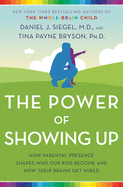
| Publisher: | Ballantine Books | |
| Genre: | Family & Relationships, Parenting, Developmental, Cognitive Neuroscience & Cognitive Neuropsychology, Psychology, General, Child | |
| ISBN: | 9781524797713 | |
| Pub Date: | January 2020 | |
| Price: | $27 |
| Parenting & Family |
by Daniel J. Siegel, Tina Payne Bryson
Parents everywhere can breathe easier: "There's no such thing as flawless child-rearing." There is, however, a way to help children become empathetic and independent individuals. The goal, as psychiatrist Daniel J. Siegel and psychotherapist Tina Payne Bryson define it, is "emotionally balanced, resilient, insightful, and empathetic" children. By applying the "Four S's"--making a child feel safe, seen, soothed and secure--and consistently responding to their needs, parents can create the ideal relationship of secure attachment with their child that will ultimately empower and help them emotionally self-regulate as adults.
The Power of Showing Up completes Siegel and Bryson's quartet of books on parenting and developing child psychology (The Yes Brain, No-Drama Discipline and The Whole-Brain Child). Based on research in the fields of attachment science, interpersonal neurobiology and neuroplasticity, as well as their own clinical case studies, Siegel and Bryson make the compelling case for empathy and trust as some of the most important pieces of the parenting puzzle. The authors refute concerns about spoiled, coddled or disrespectful children, and specify that their method does not mean permissive parenting; setting boundaries continues to be an essential piece of creating a secure environment. Instead, parents can "walk beside [children] through their pain, helping them see that they are strong enough to handle a difficult situation and come out okay," developing the emotional toolbox necessary for managing difficult situations in life. Offering strategies in communication, understanding and personal insight, The Power of Showing Up is a clear, compassionate instructional guide to the significant ways a shift in parental behavior can and will affect a child. Highly recommended for parents, guardians and educators seeking insight for themselves and their children. --Jennifer Oleinik, freelance writer and editor
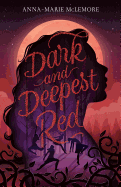
| Publisher: | Feiwel & Friends | |
| Genre: | Fantasy, Romance, Contemporary, Young Adult Fiction | |
| ISBN: | 9781250162748 | |
| Pub Date: | January 2020 | |
| Price: | $17.99 |
| Starred | Children's & Young Adult |
by Anna-Marie McLemore
Anna-Marie McLemore's fifth novel, the National Book Award-longlisted Dark and Deepest Red, is an artful, spellbinding YA reimagining of Hans Christian Andersen's "The Red Shoes."
Lala and her Tante Dorenia moved to Strasbourg because, as Tante says, "What we are, they have made it a crime in our own country. So we will go somewhere no one knows us." She refers to a law that forces the Romani out of home after home: "Whoever harms a Gypsy commits no crime." Then "la fièvre de la danse" takes over the city. At first one, then tens, then hundreds of people dance manically, as if possessed. Lala knows it is only a matter of time before the stares of the city turn to her, fear in their eyes, "witchcraft" on their tongues.
Rosella, like Lala, is 16 and lives in present-day Briar Meadow where, every October, a "strangeness" they call the "glimmer" settles onto the town. For generations, Rosella's Mexican American family have been shoemakers known for their red shoes; this year's glimmer has ensnared their shoes, making anyone wearing them fall in love. Even as the magic of the red shoes romantically enchants Rosella and childhood friend Emil, Rosella's pair makes her dance as if possessed.
McLemore's (Blanca & Roja) vision and skill inspire awe in this gorgeously rendered novel. Though their characters are tied to places so tightly they chafe, the work itself is expansive, somehow evoking the vastness of human experience through only three points of view. McLemore's settings charm and their plotting captivates, but it is their devoted and deep character development that makes the work so enthralling. Deep and Darkest Red is for the teen "capital R" Readers out there who want a work with writing as entrancing and seductive as the story. --Siân Gaetano, children's and YA editor, Shelf Awareness
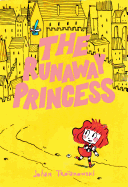
| Publisher: | Random House Graphic | |
| Genre: | Fantasy & Magic, Fantasy, Juvenile Fiction, Comics & Graphic Novels, Action & Adventure | |
| ISBN: | 9780593118405 | |
| Pub Date: | January 2020 | |
| Price: | $12.99 |
| Children's & Young Adult |
by Johan Troïanowski
If someone collected the stream-of-consciousness storytelling of the world's most imaginative children, it might read something like The Runaway Princess.
In the first of the graphic novel's three parts, "The Princess Runs Away (and Makes Some Friends)," Princess Robin of Seddenga flees from the castle. Who can blame her for skipping etiquette class when outside the castle walls is the Aquatic Carnival in Noor, the City of Water? On the way, she meets four abandoned brothers in the forest and leads them to safety. In "The Princess Runs Away Again (by Accident This Time)," Robin and the brothers are playing hide-and-seek in the castle gardens when she hears a voice inside a well calling her name. That night, the voice lures her from the castle while she's sleeping. And in "The Princess Tries to Stay in One Place (but the Weather Doesn't Cooperate)," Robin and the brothers are playing pirates when a storm comes. They scuttle to safety aboard a ship, which is swept away to a deserted island.
Johan Troïanowski grounds his impetuous storytelling with allusions to iconic children's tales: redheaded, red-frocked Robin's amble through the forest recalls Little Red Riding Hood's, and the kids encounter a Cheshire cat and a gingerbread house. Yet The Runaway Princess is unmistakably a modern confection, with the book's robot bugs and lines like "Ow! I've bumped my booty." Troïanowski's dainty hand-drawn and -colored illustrations range from modest panels to two-page spreads; some pages feature activities. More interactivity is on offer through the text's dozen or so calls for action, from either a cast member or an omniscient narrator. This improvised, kitchen-sink quality gives The Runaway Princess the look and feel of a sumptuous, thrown-together royal feast. --Nell Beram, freelance writer and YA author

| Publisher: | Roaring Brook Press | |
| Genre: | Values & Virtues, People & Places, United States - African-American, Social Themes, Juvenile Fiction | |
| ISBN: | 9781626726314 | |
| Pub Date: | January 2020 | |
| Price: | $17.99 |
| Children's & Young Adult |
by Angela Joy, illust. by Ekua Holmes
With Black Is a Rainbow Color, debut author Angela Joy pens a loving tribute to all the ways black is beautiful. Caldecott Honor and Coretta Scott King Award-winner Ekua Holmes's brilliant collage illustrations elevate the text's themes of resilience and strength.
This multifaceted look into varying definitions and descriptions of what black is begins with the literal ("Black is a crayon, tangled in a box... Black is the dirt where sunflowers grow") before moving into more figurative explorations ("Black is history... Black is the love that lives inside of me"). Some of these examples are explored in depth in comprehensive back matter that includes an author's note, a themed playlist, poetry, a bibliography and "A Timeline of Black Ethnonyms in America" which shares the evolution of terms used for black people throughout the history of the United States.
Holmes's (What Do You Do with a Voice Like That?) deft hand unifies snippets of old newsprints, boldly colored patterned paper, demure cityscapes and figures outlined in thick, black lines. One particular spread epitomizes Holmes's graceful blending of textures: four "cornerstones... of the modern Civil Rights Movement" are pictured, the women (Mamie Till-Mobley, Ella Baker, Marian Wright Edelman and Fanny Lou Hamer) puzzled together as stained-glass windows framed by solidly defined stonework, all placed atop a misty, muted rainbow. With its charming simplicity, Black Is a Rainbow Color is a great way to begin unpacking a wide spectrum of connections and ideas behind the layered definitions of black. --Breanna J. McDaniel, freelance reviewer